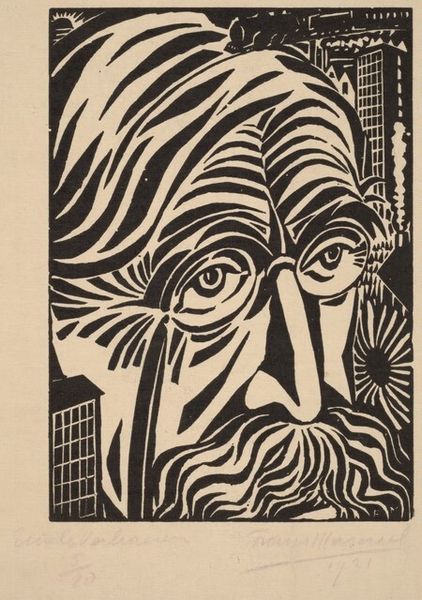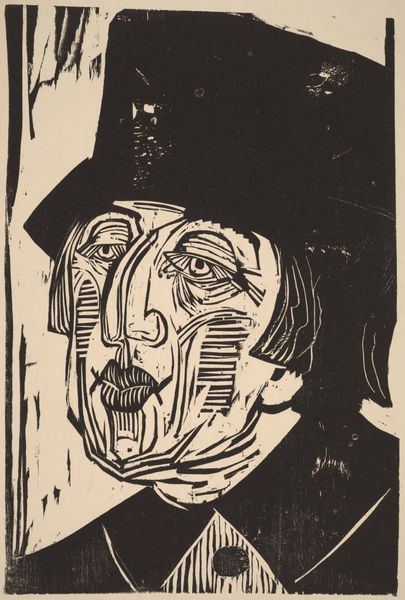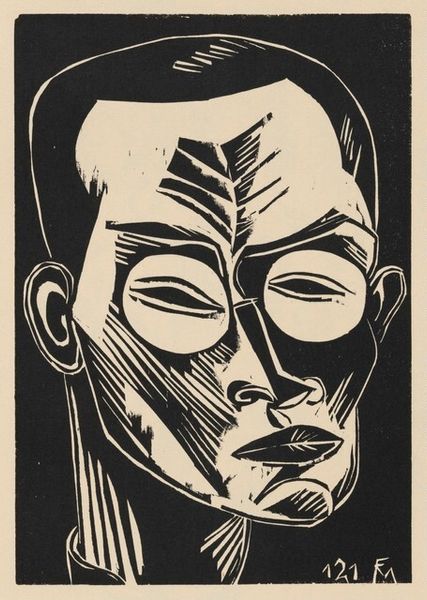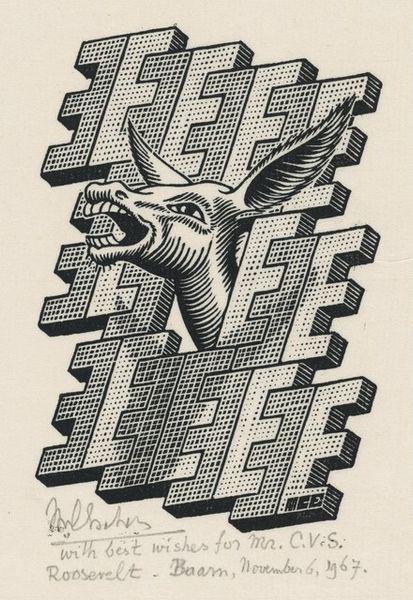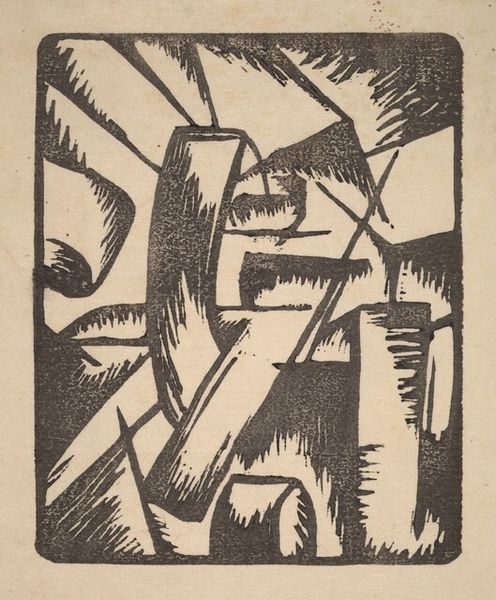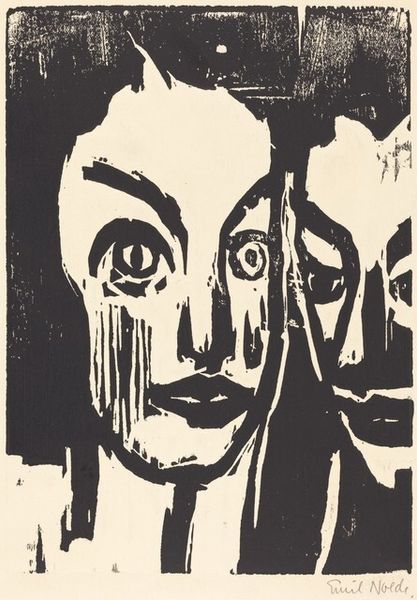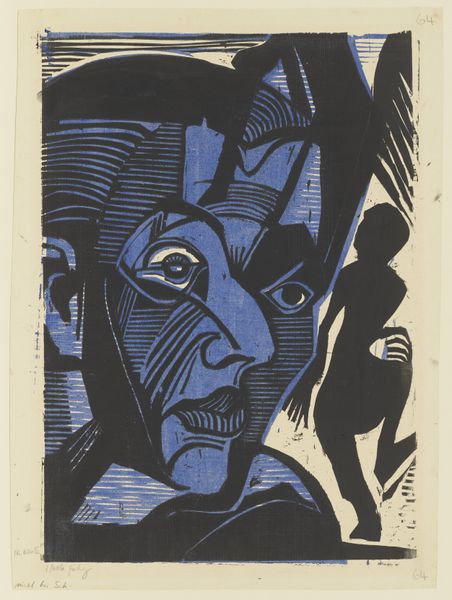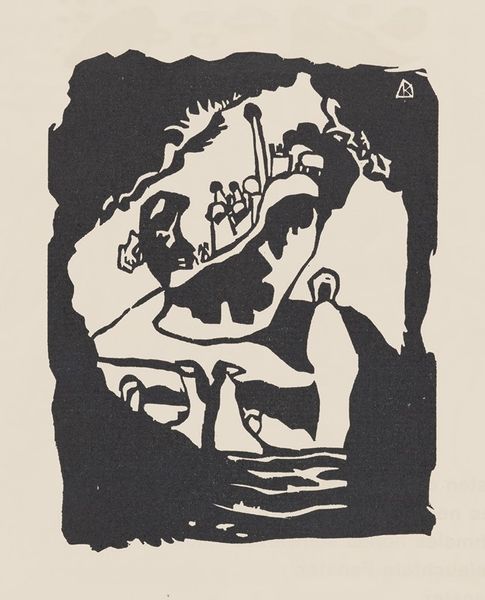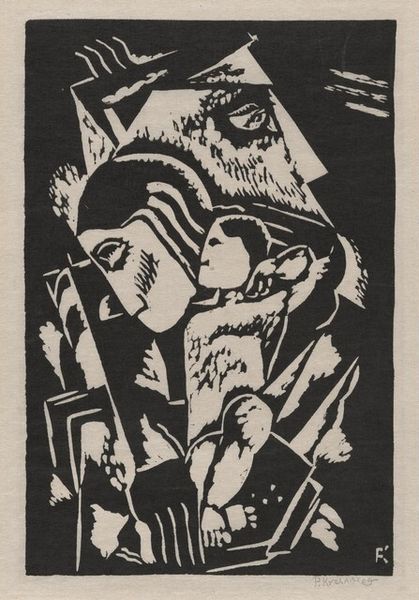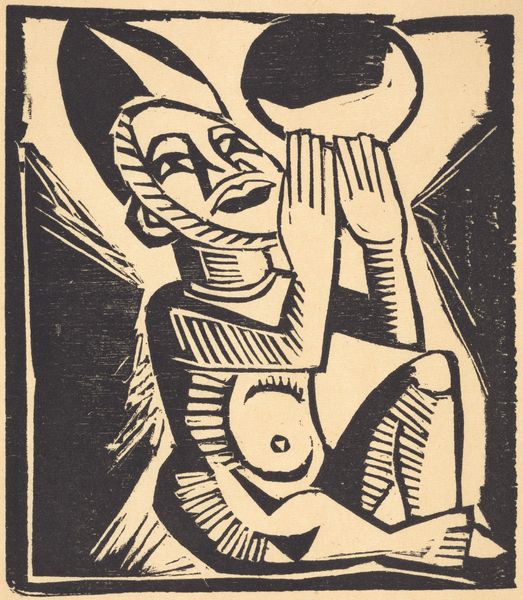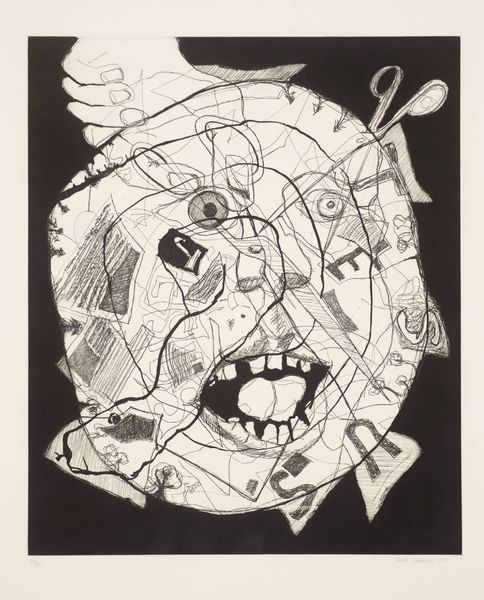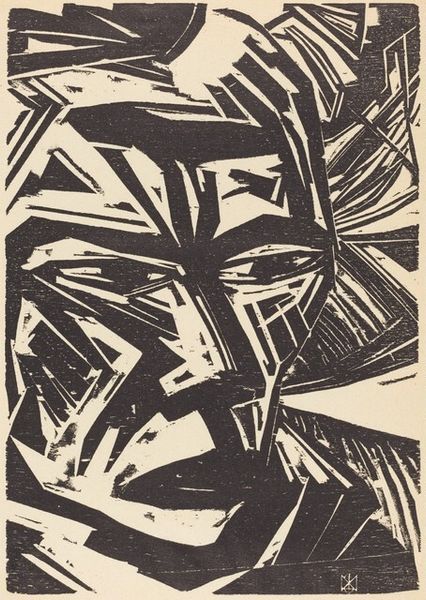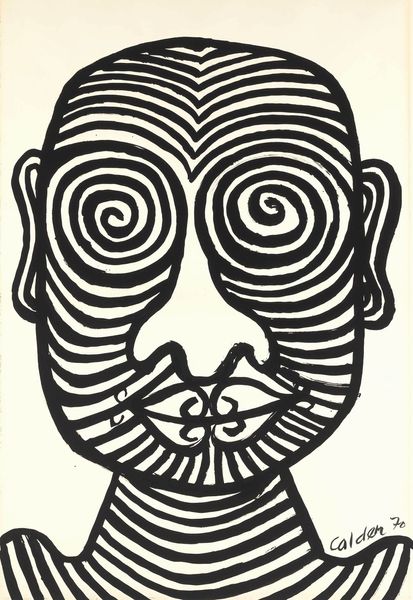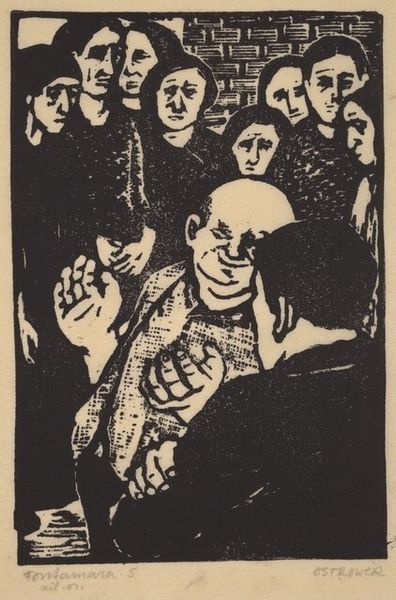
graphic-art, print, woodcut
#
portrait
#
graphic-art
# print
#
caricature
#
caricature
#
woodcut
#
abstraction
#
portrait drawing
Copyright: National Gallery of Art: CC0 1.0
Curator: Let’s consider this small, striking woodcut by M.C. Escher, titled “Initial S,” from around 1932. Editor: My initial reaction? It's unsettling. The stark black and white contrast, the jagged lines… it projects a palpable sense of anxiety. Curator: Indeed. While small in scale, its visual language carries significant weight, especially when considering Escher’s evolving exploration of abstraction and portraiture within the social and political context of the 1930s. One has to wonder about the psychology behind what he might be communicating. Editor: Precisely! Looking at the composition, it feels like a distorted, almost grotesque caricature. The prominent eyes and menacing teeth suggest a predator, perhaps symbolizing a society on edge, rife with insecurity and fear. What was the prevailing cultural milieu, and how might that have seeped into the piece? Curator: The rise of authoritarianism, economic instability, and growing social unrest—all undeniably contributing factors. "Initial S" becomes more than just a stylized face; it's a dark mirror reflecting the collective anxieties of the period. The "S" form could reference any number of problematic aspects that were pervading culture at that time. Editor: The woodcut medium itself, with its sharp lines and inherent limitations, adds to the sense of unease. It mirrors the rigid societal structures that stifle individual expression. Curator: And consider the context of display—where might this have been seen, and by whom? Was it a private commission, or intended for a wider audience? These questions illuminate the role of art within the power dynamics of its time. Editor: It prompts a reflection on power dynamics, doesn't it? Who is doing the looking and how can the very act of representation reinforce certain hierarchies or challenge them? Perhaps the monstrous visage serves to undermine figures of authority. Curator: Certainly food for thought. The layers of interpretation seem as sharply delineated as the woodcut's lines. Editor: Exactly, seeing the political reflected within the intensely personal adds another important element to how we perceive this.
Comments
No comments
Be the first to comment and join the conversation on the ultimate creative platform.
